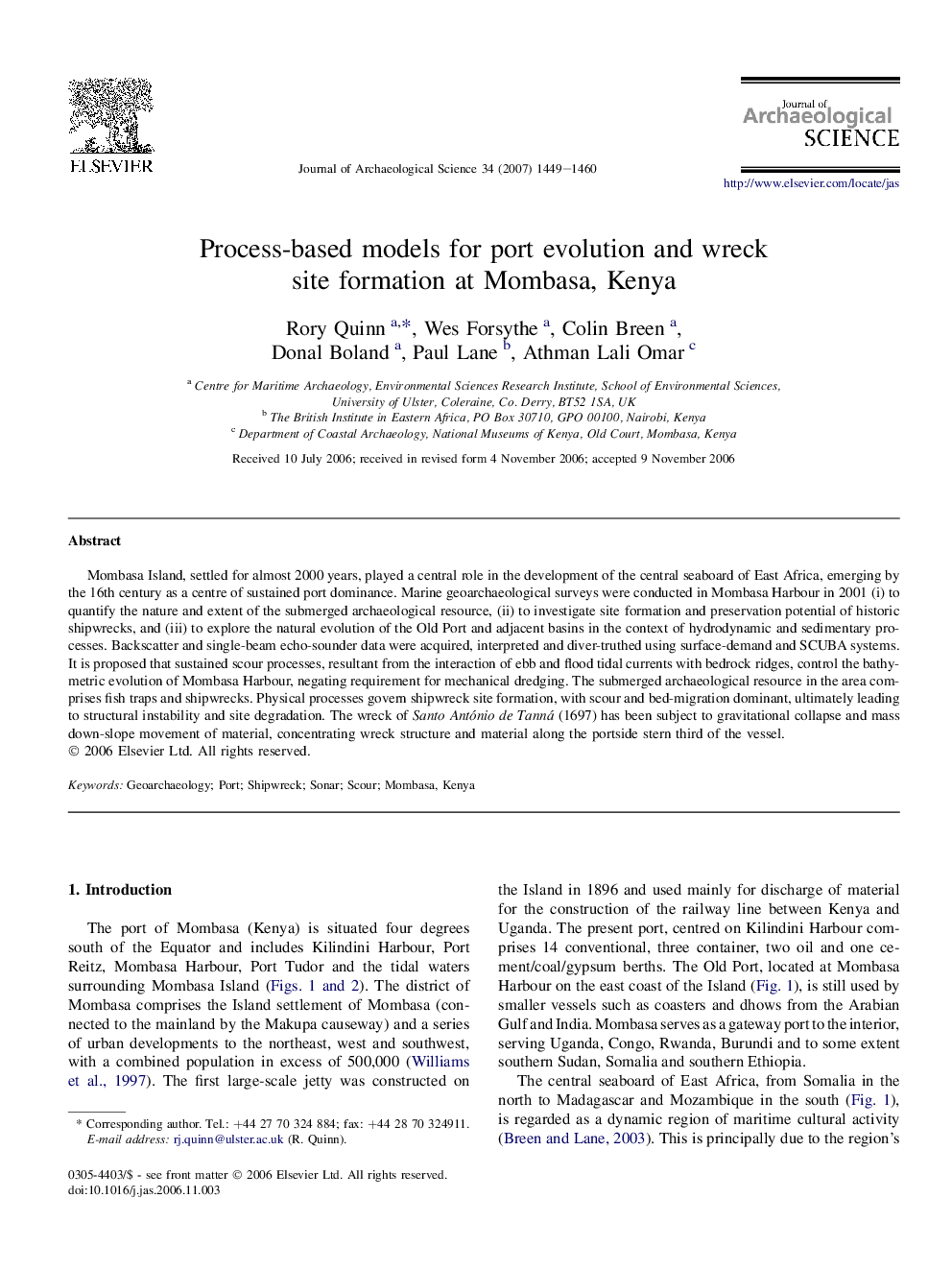| Article ID | Journal | Published Year | Pages | File Type |
|---|---|---|---|---|
| 1037328 | Journal of Archaeological Science | 2007 | 12 Pages |
Mombasa Island, settled for almost 2000 years, played a central role in the development of the central seaboard of East Africa, emerging by the 16th century as a centre of sustained port dominance. Marine geoarchaeological surveys were conducted in Mombasa Harbour in 2001 (i) to quantify the nature and extent of the submerged archaeological resource, (ii) to investigate site formation and preservation potential of historic shipwrecks, and (iii) to explore the natural evolution of the Old Port and adjacent basins in the context of hydrodynamic and sedimentary processes. Backscatter and single-beam echo-sounder data were acquired, interpreted and diver-truthed using surface-demand and SCUBA systems. It is proposed that sustained scour processes, resultant from the interaction of ebb and flood tidal currents with bedrock ridges, control the bathymetric evolution of Mombasa Harbour, negating requirement for mechanical dredging. The submerged archaeological resource in the area comprises fish traps and shipwrecks. Physical processes govern shipwreck site formation, with scour and bed-migration dominant, ultimately leading to structural instability and site degradation. The wreck of Santo António de Tanná (1697) has been subject to gravitational collapse and mass down-slope movement of material, concentrating wreck structure and material along the portside stern third of the vessel.
